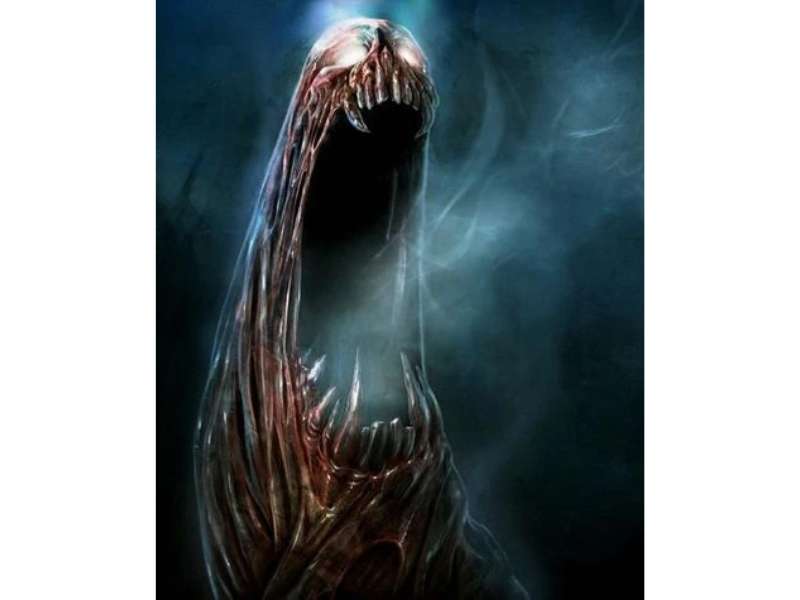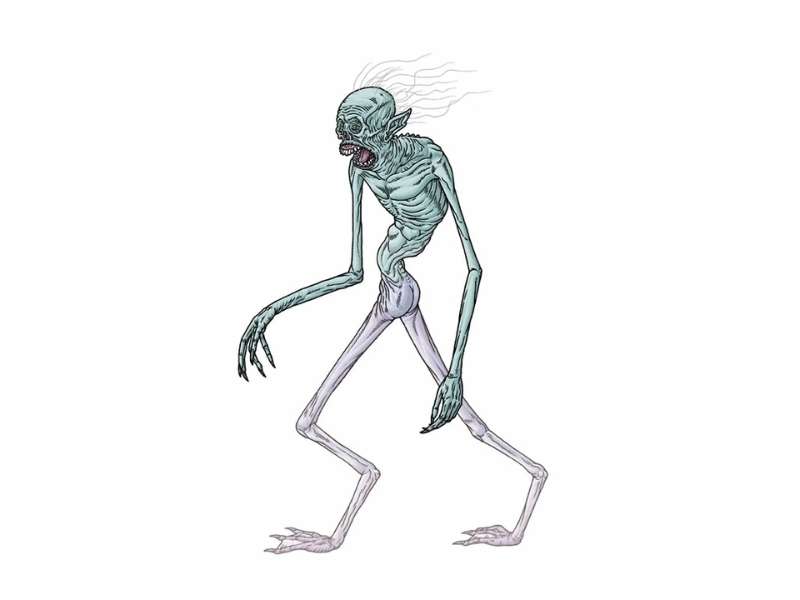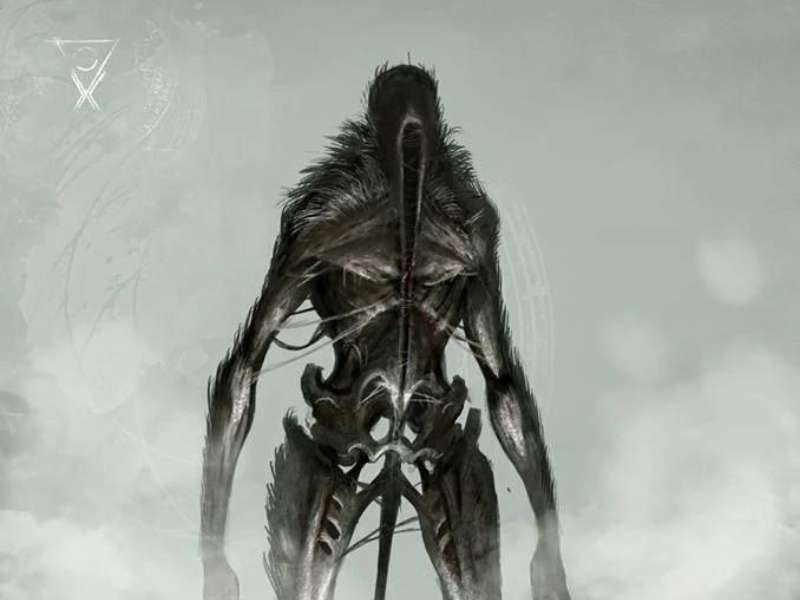Though most of the “Great Old Ones” (not to be confused with the Outer Gods) that appear in the works of weird horror writer H.P. Lovecraft and his larger “Cthulhu Mythos” have little ties to existing mythology, one does stand out as a notable exception.
This creature, known as Ithaqua, exists in the cosmic horror pantheon.
Often referred to as the “Windwalker” or “Demon of the Cold,” Ithaqua is a malevolent entity that is best described as the personification of the frigid winds that sweep across the desolate, icy wastes of Antarctica or the Sub-Arctic.
Ithaqua is described as a tall, gaunt figure with a skeletal frame, though a swirling, icy mist obscures his body – while his face is said to be chillingly empty and devoid of features. He is further noted to have glowing, piercing eyes that can freeze the soul. It would almost be easy to suggest that George R.R. Martin was inspired by Ithaqua when writing about “The Others” in his A Song of Ice and Fire book series, also known as the “White Walkers” in the HBO adaptation of Game of Thrones.

In Martin’s work, the Others are stated to have cold blue eyes akin to burning ice. They are also tall and gaunt, with flesh pale as milk. It may certainly be a matter of coincidence, but there is more to the story—and they have had a similar origin.
Likewise, J.K. Rowling Harry Potter series features the Dementors, which are noted for being shrouded in black swirls with dark faces that suck the warmth and life from their targets.
Not a Lovecraft Creation
What is also significant about Ithaqua is that he isn’t actually a creation of Lovecraft, yet is part of the larger mythos. He first appeared in the “The Thing That Walked on the Wind,” by August William Derleth, who was Lovecraft’s first publisher, and founder of the Arkham House publishing company.
First published in January 1933 in the pulp magazine Strange Tales of Mystery and Terror, the story tells of strange events in Manitoba, Canada. The entire population of the town of Stillwater disappears overnight. During the ensuing investigation, it is discovered that the town had worshipped an “elemental,” a spirit of one of the forces of nature.
Derleth’s story was inspired by Algernon Blackwood’s 1910 novella The Wendigo. Like Lovecraft, Derleth often looked to previous works for inspiration and found Blackwood’s tale about a supernatural creature that lived in the Canadian wilderness.

What is notable is that “Wendigo” is a mythological being or evil spirit with roots in Algonquian folklore and has been used widely in literature for centuries. The Wendigo has been described as having human-like characteristics or as possessing human beings. In some tales, he () is described as a giant humanoid with a heart of ice.
Today, there is a modern psychiatry disorder known as “Wendigo psychosis” that features symptoms of both an intense craving for human flesh and a fear of becoming a cannibal!
The Wendigo has evolved in popular culture, depicted as everything from a Bigfoot-like being to an all-black creature with massive antlers—quite a departure from Ithaqua, of course.
Yet, the Cthulhu Mythos version of Ithaqua does maintain some of the powers and abilities that appear in some of the Wendigo legends, including the ability to control the wind with incredible force. Ithaqua is described as being able to summon blizzards, create freezing gales, and even shape the wind into weapons. He can further manipulate the temperature of his surroundings, freezing objects and living beings instantly.
In addition, Ithaqua has the power to induce madness and fear in those who fall under his chilling presence, which (like most Cthulhu Mythos creatures) can drive victims to the brink of insanity.
The Contrasting Origins of Ithaqua and Wendigo
While the origin of the Wendigo myth is forgotten to time, predating the European arrival to North America, some anthropologists believe the legend may have been a cautionary tale about the importance of community and sharing resources during harsh winters, when human survival depended on banding together. It has become part of the mythology of the Algonquin-speaking peoples, including the Ojibwe, the Saulteaux, the Cree, the Naskapi, and the Innu.

It may also have been a warning to children not to stray too far into the woods, and from there, it took on a life of its own, becoming a folk tale like Beowulf in Scandinavian legends.
The first European-written account of the Wendigo was by Jesuit missionary Paul Le Jeune in 1636. However, non-Native writers have also depicted the Wendigo, whose depictions often differ from those of Indigenous authors.
In most accounts, the Wendigo was originally human – certainly true of the Others in A Song of Ice and Fire and Game of Thrones.
Wendigo’s origin is thus far different from that of Ithaqua, whose beginnings are shrouded in mystery.
However, the Ithaqua is believed to be an ancient entity that has existed since the dawn of time. In the Cthulhu Mythos, he is linked to the Elder Gods, the powerful race of cosmic beings who predate humanity. Yet some stories suggest that Ithaqua was once a mortal cursed by the Elder Gods for his ancient transgressions.

Ithaqua appears as a central villain in Brian Lumley’s Titus Crow novels – published between 1974 and 1989 – which were noted as a departure from the Cthulhu Mythos as the title character sought to fight back against the Great Old Ones. In the novels, Ithaqua is noted to tread the winds of space between Earth and Borea, a frigid planet that once served as his prison before he broke free.
The works of Blackwood, Derleth, and Lumley were further expanded upon in the 1997 anthology The Ithaqua Cycle: The Wind-Walker of the Icy Wastes. With each new story, authors have contributed to the mythos, adding a few contradictions along the way.
Ithaqua is described as dwelling on the icy world, where he brings helpless victims back to worship him, builds cities for him, and, most ominously, bears his children. He spends just one year in every five on Earth to expand his cult, and it is implied that he seeks offspring that can surpass his own limitations imposed by the Elder Gods. His desire is to free the rest of the Great Old Ones from their imprisonment, but it is also hinted that he seeks to address his loneliness, as his surviving offspring largely turn against him.
This Great Old One remains a terrifying and enigmatic figure in the greater Lovecraft’s mythos. Ithaqua could be best summed up as representing the primal forces of nature and the chilling indifference of the cosmos. His appearance often heralds impending doom and destruction, while his chilling presence almost certainly leaves a lasting impression on those who encounter him.
We work pretty hard on this stuff. Do us a solid if you’re getting anything out of our writing!










0 Comments